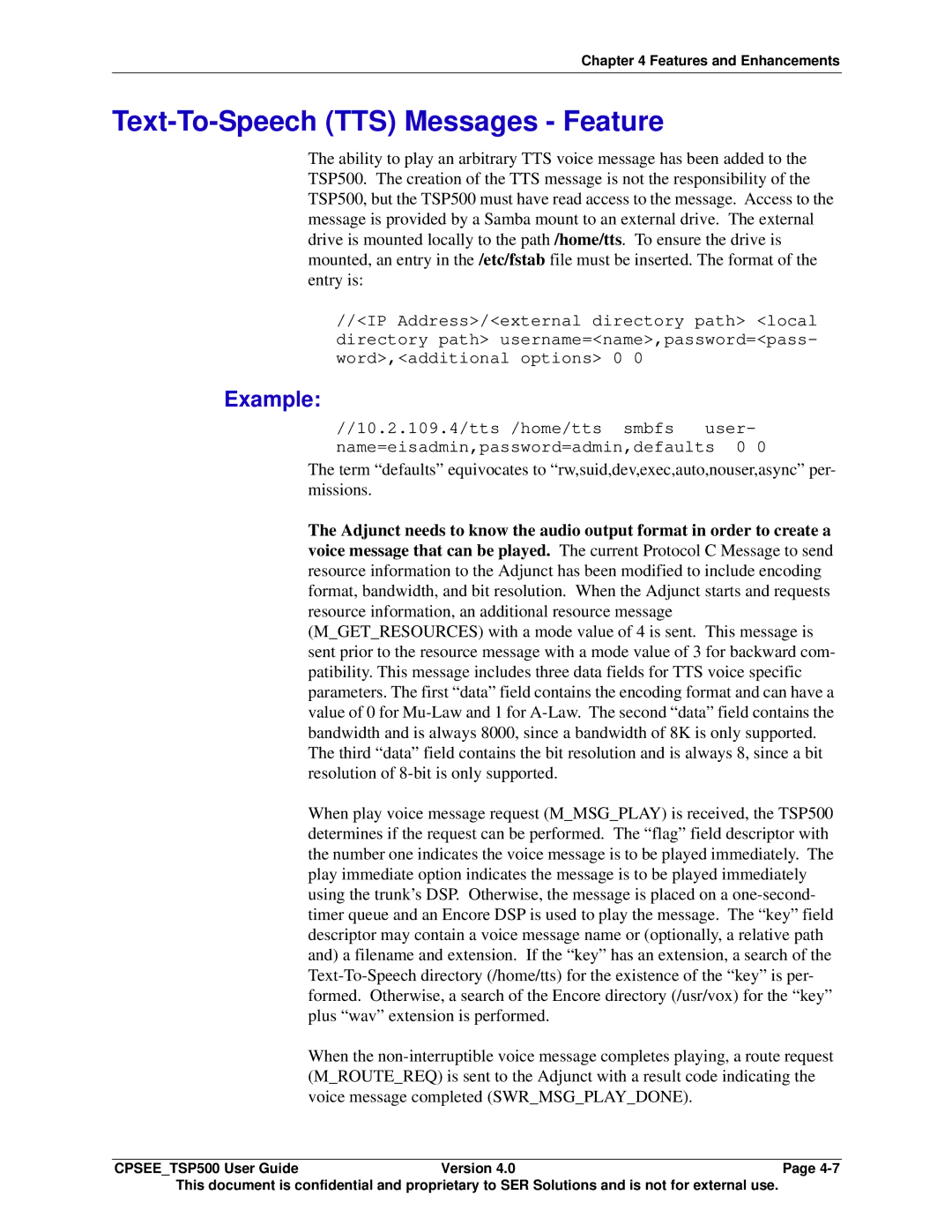Chapter 4 Features and Enhancements
Text-To-Speech (TTS) Messages - Feature
The ability to play an arbitrary TTS voice message has been added to the TSP500. The creation of the TTS message is not the responsibility of the TSP500, but the TSP500 must have read access to the message. Access to the message is provided by a Samba mount to an external drive. The external drive is mounted locally to the path /home/tts. To ensure the drive is mounted, an entry in the /etc/fstab file must be inserted. The format of the entry is:
//<IP Address>/<external directory path> <local directory path> username=<name>,password=<pass- word>,<additional options> 0 0
Example:
//10.2.109.4/tts /home/tts smbfs user- name=eisadmin,password=admin,defaults 0 0
The term “defaults” equivocates to “rw,suid,dev,exec,auto,nouser,async” per- missions.
The Adjunct needs to know the audio output format in order to create a voice message that can be played. The current Protocol C Message to send resource information to the Adjunct has been modified to include encoding format, bandwidth, and bit resolution. When the Adjunct starts and requests resource information, an additional resource message (M_GET_RESOURCES) with a mode value of 4 is sent. This message is sent prior to the resource message with a mode value of 3 for backward com- patibility. This message includes three data fields for TTS voice specific parameters. The first “data” field contains the encoding format and can have a value of 0 for
When play voice message request (M_MSG_PLAY) is received, the TSP500 determines if the request can be performed. The “flag” field descriptor with the number one indicates the voice message is to be played immediately. The play immediate option indicates the message is to be played immediately using the trunk’s DSP. Otherwise, the message is placed on a
When the
CPSEE_TSP500 User Guide | Version 4.0 | Page |
This document is confidential and proprietary to SER Solutions and is not for external use. |
| |
